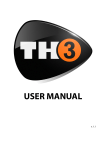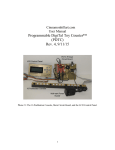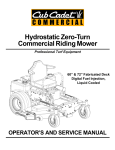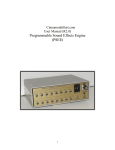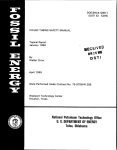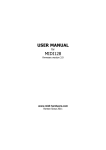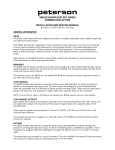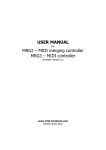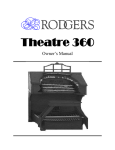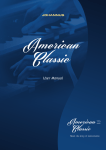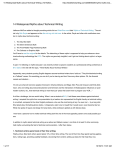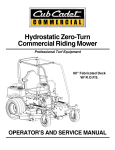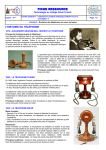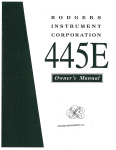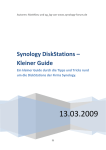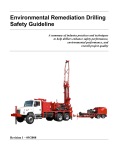Download ETONE Newsletter
Transcript
BUCKY REDDISH ETONE Newsletter EDITOR MICHAEL HUTCHERSON PUBLISHER DECEMBER 2011 SPECIAL POINTS OF INTEREST: The WOW Factor Robert Coulter Part 3 Birthday Bash in Georgia Tweaking a Conn 650 WOW Moments There aren’t a lot of things in life that we can see or experience that cause us to say “Wow” and get our full attention. If you talk to people that love the theatre pipe organ, you’ll soon find out that discovering the theatre pipe organ was one of their “Wow” moments in life. In our last newsletter we asked our readers to share their “Wow” moments and we got numerous responses. Here are a few of them. ley Theatre which at that time was the Center for Italian culture. Philip Gray: Frederick Muller: INSIDE THIS ISSUE: Tweaking a Conn 650 2 Building the Rodgers/Office Depot 3/20 2 Birthday Bash 3 8 Robert Coulter 10 Do It Yourself Theatre Organ - Part 3 ...Attended a chapter meeting to see a silent movie...afterwards a tour of the organ chambers...Being a retired Mechanical Eng. I am interested in anything electro-mechanical so I asked if they needed help working on the organ. You know what that answer was. That was 8 years ago. Now I am committed. Hanging around with Ashley Miller at the 1978 Atlanta convention. We usually rode the bus trips together. Heard many fascinating tales. Carter Bidwell: Working on the organ crew at the old Newark, NJ Stan- John Wall: ...playing the Capital Theatre Organ (3/15 Wurlitzer) in situ in the 70’s. I have wanted to capture the same sound ever since… Richard B. Ahlvin: I suppose it was the first encounter with the Robert Morton (3/8) in the Temple Theatre in Meridian, MS. Donald Hansen: First convention I went to, Richmond, 1986, “Wings” at Byrd Theatre. I have had 2 real “Wow” moments in the 50+ years of playing organ. The first was bringing the fabled Colonial Kimball (4/32) up out of the pit on Father’s Day 1993 with my entire family in the audience. In all my years of playing up to that Continued page 2 A Miscellaneous Article Jack Moelmann For a long time now, Bucky Reddish, your ETONE Editor, has been asking, pleading, and everything else for me to write up something for the newsletter. On each occasion I said of course I would and that was the end of that until the next time he asked. Well, I thought it time to do something about those requests. Many of you know me and probably many don’t. My name is Jack Moelmann. I started ETONEs around 1991. I have been a member of ATOS since 1967, am currently on the ATOS Board of Directors and have been for some 25 years now. I am a past President of ATOS, Honorary Member, Inductee in the ATOS Hall of Fame and concert organist. (How humble can one be!!) I am a retired Colonel in the US Air Force continued on page 6 PAGE 2 The WOW Factor Point. I had never brought the console up out of the pit. The second was playing as a session musician for the soundtrack of the recent Martin Scorcese HBO series “Boardwalk Empire” which was done on the fantastic Lowes Jersey Wonder Morton. Diane Whipple: I fell in love with pipe organs when I was 6, both continued from page 1 a classical one in church and a theatre organ at a children’s Christmas program at the Aurora (IL) Paramount, where I sat directly between the organ chambers. Leith Ewert: I grew up in the country where a real theatre pipe organ did not exist. I originally found my love for the theatre organ sound listening to Tony Fenelson playing the thea- tre organ at the Regent Theatre and Dendy Theatre on vinyl recordings. New WOW moments happen everyday. Let’s give others the opportunities to hear and experience a theatre pipe organ. Who knows, you just might create a WOW moment for someone you know…... Tweaking a Conn 650 Craig Browning I had a Rodgers Trio at one point and had to give it up when moving... I had a Rodgers trio at one point and had to give it up when moving (it also had developed electrical problems). I recently got a basically working Conn 650 with a few extra goodies (a not so interesting add-on Min-O-Matic beatbox, which I removed and a set of pipe speakers, with echo switch and a Leslie hookup that won’t work as is with any Leslies I own). I also have a service manual photocopy. The Conn is not as beefy construction (most notably in the construction of the pedalboard) as my old Rodgers or a 2 manual early digital theatre style Allen I still have at this time. With the exception of not having a Glockenspiel, the Solo manual stop selection is better, though not standard with how most theatre pipe organ Solo manuals are specified. The “Complex” bus rods are a little temperamental, what can be used to clean them? The organ lacks a fifth harmonic Flute/Tibia stop, there is a continued on page 3 Building the Rodgers/Office Depot 3/20 Vince Kurpan Know where these pipes are found? My parents have been ATOS members since the 60’s so I’ve been around theatre organs a long time. In 1973, when I was in high school, we installed a Page 2/6 theatre organ in our house. I ETONE NEWSLETTER always liked theatre organ and played reasonably well but pretty much doubted that I would ever have one of my own. As you are all too aware, theatre organs are not easy to own like a piano. I never liked electronic organs much and the good ones were far too expensive anyway. So I had pretty much written the whole thing off and moved on. I played tenor banjo, then a bit of piano and eventually got into Austrian button accordions (which I still play). A few months ago things began to get interesting around my house, There was a pedal board continued on page 4 PAGE Tweaking a Conn 650 useless synthetic chime on the Solo manual. I’d like to rewire this up a couple of octaves as a Sub Tierce 3-1/5’ to go along with the Tibia 16, 8, 5-1/3, 4’ set. Is this too difficult or impossible to do? Also it sounds like the Tibias somehow go partially through the Main channel, the highs don’t “shake” enough through the on board Leslie, is there a way of changing this? The pedals (except for the Tuba & Toy Counter) are on the Flute channel (something that also annoys me about the above mentioned Allen) and hence through the Leslie. I’d like to be able to run them entirely through the Main channel when on external speakers. There is a “Noticeable Difference” in a Conn Main channel played through a Peavy Bass Cabinet with 2 10’s and a 15” subwoofer using a Fender Bassman head. I did a test run using an Ampthenol to 2x1/4” adaptor I put together for taking the 251/51C signals into other sound equipment. There are 2 blank spaces in the Accompaniment and 1 in the Solo, possibly a place for MIDI controller contacts if a new or good condition bus rod(s) could be found. The manual rhythm unit is surprisingly usable (with some exception to the “Air Brake” crash cymbal on the pedals), oddly enough the early digital Allen also has an analog rhythm section and it generally does not sound as good as the one on the Conn. There was an added Leslie Kit in the organ that takes the 51C out audio signal and motor control from the on-board Leslie and feeds it into a box with a multipin plug (I don’t have the Specs in front of me). I also have a 2 channel Leslie that came off a 2 channel theatre style Lowery that has some less pins than the Conn add-on. I also salvaged the Switching Box (two three position switches and an On-Off button in the middle) and multipin socket off of the unit from the Lowery. Both its Leslie and a small Leslie built cabinet with two angled stationary 10” speakers (not too unlike a Bose radio cabinet) have AC power supplied from line cords, the “Real” Leslie cabinet has a grillcloth front, (I think) 2 10’s (possibly augmented by a stationary tweeter) for the main, probably a 15” bass speaker and a Rotosonic unit for the Flutes. The organ has the “Type II” reverb kit added (I’d like to get the old Chif/Harmonic I&II tabs back and mount the reverb on a knob under the keydesk, but I assume these are long gone and impossible to find). The added Harmonic options would help with the limited Great mutations. I remember readying a story where someone mentioned roasting an output stage in a similar vintage Conn attempting to hook up a digital reverb/effects unit. I’d like not to repeat this mistake. The 650 “Fun Master” (envelope/ repeat unit) is different. The Tibia Repeat is a “Chopper” effecting the Solo Tibia keying, but does not allow for that Vibraphone like effect (w/sust.) that other models do. Editors Note: If you can answer any of Craig’s questions or offer him suggestions on his project, contact him by email. His email address is <[email protected]> Shanklin Music Hall Trumpets> Aztec Theatre Glock> Wanamaker Console View> 3 PAGE Building the Rodgers/Office Depot 3/20 In the family room and, in my workshop, a 1967 Rodgers 3 manual “console” having a second stop rail added. There are console drawings, stop lists, and catalogs or organ parts strewn about. It reminds me of that time 35 years ago when we were installing the Page 2/6 but there are no pipes this time. I’m building a virtual theatre pipe organ (VTPO). Sure, it would be nicer to have an actual Wurlitzer 3/30 installed in a modest mansion but that just isn’t going to happen. Building a virtual organ can be a great alternative to sitting on the sidelines the rest of your life. You get many of the same experiences as installing a real Wurlitzer. Bundles of unmarked wires that have to be rung out, sticky pedals to clean, stripping old varnish, fixing contacts, getting new stops engraved and cleaning rodent debris out of the console (which we did in fact have to do). What is a VTPO and how is it different from an electronic organ? Virtual organs have pipes that come from Office Depot. In other words, the sounds are all generated (or, more accurately, retrieved) by an “office computer.” Because the “sound engine” software is written specifically to emulate pipe organs, every nuance of organ behavior is modeled in amazing detail. They even include things like the effects of pressure drop that results from playing too many pipes at once. MIDI sampled organs are not new but what has changed drastically is the level of detail in both the samples and the processing of effects. Also, there are full theatre organ sample sets available rather than just assorted organ sounds from who knows where. This is all possible because modern office computers have become so enormously powerful. Top quality digital audio CDs are sampled at rates like 44,000 times per second but most any office computer today can do several billion operations per second. So your computer can do something like 100,000 things between the individual data points on an audio CD. More colorfully put… in the time it takes your middle C vox reed to flip back and forth, your computer can read a couple novels, go to Paris for lunch, and solve a couple hundred Rubik’s cubes. As with digital photography, the game has changed and the electronic organ world will never be the same again. I know of at least three VTPO programs: Hauptwerk, Miditzer and jOrgan. Hauptwerk from Germany, is the most popular because it gives the best balance between flexibility and the amount of technical setup involved. Miditzer is more basic (and simpler to set up) while jOrgan is more flexible but requires some real software knowledge. You can learn all about Hauptwerk (and listen to samples) at <www.hauptwerk.com>. There are also some hardware alternatives where you don’t use an office computer at all. Artisan makes a “black box” sound engine and Midi Concepts makes a sort of self contained virtual organ. So there are alternatives for various levels of technical skills. How does it all go together? Hauptwerk (running on your PC) is sort of the relay and chest work. Then you buy a sample set (from Paramount, Key Media, or Milan Digital Audio) which is essentially yours pipes. There are sounds bytes of every pipe from an actual theatre organ somewhere. They contain many gigabytes of data and come on DVDs because they are too big for CDs. Hauptwerk takes the MIDI “requests” from the keys and stops then plays the appropriate samples sort of like a lightning fast juke box. A virtual organ system consists of the following parts: A console with a MIDI output, or some Casio MIDI keyboards stacked up A personal computer with a MIDI-USB adapter so the computer can read the MIDI signals. A sound system to take the computer’s headphone output and “make it bigger” Hauptwerk software + sample set. ($700-$2000 depending on features And size). Depending on what you have available this can be done for as little as $2,500 or as much as you care to spend. I think a very vice VTPO can be built for about $5,000 if you already have a good stereo system to use for the speakers. My VTPO journey begins. The first time I’d heard the term VTPO was in March of 2010. Shortly after that, I joined the Yahoo VTPO newsgroup to learn a little more about it. Another planet lined up with the upcoming ATOS convention being only 3 hours away in Seattle. It was the perfect storm. We attended the convention and I talked to half a dozen people at Artisan and Midi Concepts. Sitting on the bus all those hours probably didn’t help anything either. The next week I found myself casually browsing Craigslist to see what was out there for consoles. The idea of actually building something rather than just plugging it together was every exciting to me. This was a big part of the pipe organ experience for me. I also wanted a real console that felt like a theatre organ. I decided that the best idea was to find a nice vintage Rodgers or Allen, gut the electronics and replace it with new Midi electronics. A few weeks or searching finally turned up a 1967 Rodgers 320. All theatre organ projects have a story or two and this one would be no exception. My Rodgers was in the middle of nowhere. Oregon does not have that many covered bridges but the only way to reach this organ was to cross one of them…..and then continue a couple more miles down a dirt road and up a sort of path. The old Rodgers had seen better days but was basically in decent shape and had what I wanted. Continued on page 5 4 PAGE Building the Rodgers/Office Depot 3/20 The keys were basswood core pipe organ keys. The stop tabs were actual Wurlitzer tabs and the wood was black walnut, much of it solid. It was only about half working so I could get it for just a few hundred dollars. One problem: No piano mover was going to get anywhere near this thing and it weighted a ton. A piano mover would never even get his truck up that path. We would have to gut this thing on site to reduce the weight than load it onto our little utility trailer. But with several miles of rough dirt road I was quite worried about flipping it off the trailer. It all went pretty much as planned and I actually screwed the organ down to the trailer just to make extra sure I wouldn’t lose it. Our 6 rank Page back home was a very good sounding organ but you do get a little bored after a while. Since virtual pipes are virtually free and take up no floor space this would be my chance to have those ranks that we never had: Post Horn, Tuba, Kinura, Oboe, Percussions, Piano, Diaphone, etc. My plans were big but my stop rail was small. 50 stops is hardly a down payment on a 20 rank organ. I needed twice that. Well, it turned out that my planets were still lined up pretty good. In searching for a console, I met a guy online from Utah who just happened to have a Rodgers stop rail that needed a home. We measured. It was close enough to risk it. I sent him a check and UPS showed up with the goods in a few days. We took it right out and stacked it on top of the existing rail to see what “Franklin-Wurlitzer” would look like. It was awesome! Of course there was still one problem with my new stop rail. My console looked like its clothes didn’t fit anymore - the case needed to grow 5” taller. This probably sounds daunting but, really, you just add very wide trim to the sides. I also widened the front for better proportions by adding some new “checks” than made a new “roof” for it. I could have just widened the “roof” though with some clever trim. The existing structure was unchanged so the original stop rail swings up for easy access just as before. The new stop rail is just pegged on top and is easily lifted off. Aside from some stain and varnish, I’m about ready to convert the console to Midi. Now anyone who’s peeked inside an electronic organ that these is a lot of scary stuff in there - but that’s all gone. There are only switches left just as you’d find in a pipe organ console. Not having actuated stops keeps it very simple. There are nothing but switches. I could just get an Artisan kit and hook a wire from every key or switch to an input, much like wiring a contact board in any pipe organ. (I’ve chosen a more DIY approach in this case though.) Console Options: The console is really the face of your VTPO. You could (and people do) just stack up some of those Casio keyboards and buy a MIDI pedal board from Guitar Center. It would potentially sound just as good as any other VTPO, but this is rather lacking in aesthetics. For me, the console is an important part of the experience. I want it to look and feel like a theatre organ. The other end of the spectrum is to retrofit an actual theatre organ console for MIDI output. Organ specific electronics are available from Artisan Organ, Syndyne, Uniflex, etc. - or you could do-it-yourself using general purpose MIDI components from places like Highly Liquid. These are massive pieces of furniture though, too big for normal sized rooms. And where do you get one in good shape? For most of us something a bit smaller is a better fit. Small “spinet” electronic organs (newer than about 1985) made by Yamaha, Technics and others often have a MIDI output and will work fine - but I want a bit more of the theatre organ experience. A later model Rodgers or Allen theatre organ would have MIDI output but these can be fairly expensive and you have to maintain the original electronics. The older pre-MIDI organs turn out to be a real bargain. Many are in need of repair but the keys and other contacts are in fine shape or easy enough to fix up. Since all of the original electronics is going out the window you don’t have to worry about keeping it in working order. Everything will be new and since you put it there, you know how to replace it. A sort of hybrid solution is to use an old organ shell but replace the keyboards with Casio or Yamaha MIDI keyboards that have been relieved of their tacky plastic cases and trimmed out with wood. Vince Kurpan 5 PAGE A Miscellaneous Article and an electrical engineer so says my college diploma. Over the years I have taken my interest in electronics and music and combined them to make a rather large and complex theatre organ in my home. Depending on who I talk to it is either a pipe organ with electronics or an electronic organ with pipes. In either case the present version is a Rodgers Custom 340 three manual theatre organ with seven ranks of pipes. My parents weren’t into organs or even music for that matter so I never had an organ at home until I entered the Air Force in 1965. I learned how to play the organ at church which had a 4 manual 70+ rank Casavant and I sang in the choir just to be close to the organ. The first organ that I owned was a Hammond L-100 spinet which I bought very soon after I went on active duty with the Air Force at Patrick Air Force Base in Cocoa Beach, Fl. I didn’t like the sound of the L-100 so rather than trading it for sometime else, I took the logical step and added speaker cabinets, the first ones being a Leslie and a Hammond PR-40. The sound was dramatically improved. Since that time, I have added to my barrage of speakers and currently have 88 individual speakers built into 28 speaker cabinets or enclosures. The smallest speaker cone is about one inch and the largest is the “sub-woofer” which boasts a 30” ElectroVoice speaker to capture the bass of the Rodgers which does have a 32’ stop on the pedal. After coming back from Germany in 1971, I bought a Hammond H-100 which was a selfcontained organ but had 2 full manuals and 25 note pedal board - a great improvement over the L-100. I still have both of these organs - the L-100 is here in the house and the H-100 is up in my house in Lake Geneva, Wisconsin. I interrupt this flow (if there really is any flow) in this article to ask that if you are interested, to visit my Rodgers organ, and a video gallery with more than 50 direct links to YouTube on the internet. Within the past few weeks, I uploaded volumes 1-6 of me playing the Hammond H-100 at my house before this one in Omaha, Nebraska. Check continued it out or just go to YouTube and search for Jack Moelmann - H-100 and that should give you a list of videos you can watch. As long as we’re at this pause in the flow, if you want to communicate with me, my email address is <[email protected]> or if you want a real thrill, why not do what I prefer to do and that is talk on the phone (618) 632-8455. While we may or may not be on the subject of Hammond Organs, I have been asked a couple of times about the biggest Hammond built. Some think it was the X66 but it wasn’t. Some have commented to me that they actually heard a recording of a Hammond which sounded like a real pipe organ. Hammond did make a few large instruments. They were called Hammond Grand -100 series. They used actual 2 manual Klann pipe organ consoles with tripper-set combination actions, 2 rows of stop tabs, 8 toe pistons, 2 expression pedals, a crescendo pedal and no drawbars. The Grand 100 (or G-100) was a grandiose, last-chance effort to prove what could really be done with tone wheels in a church organ configuration - if cost were no object. However, cost always played a major role. All things considered, the Grand-100 was a technical success. Original selling price was $13,750 including power amps and four tone cabinets. Hammond’s main objective was to create a console that was equipped exactly like a pipe organ. There were no external or visible clues that the sound source was generated by tone wheels. Previous Hammonds had only nine drawbars. The G-100 had 12 harmonics derived from a “standard” generator with 91 tone wheels and their 2 additional harmonics, 7th and 11th, derived from an extra half-set of tone wheels which were tuned to a different set of frequencies to better approximate the needed harmonics. With a total of 14 harmonics, better reeds and strings could be synthesized. So that is a little bit about the Hammond G -100. Back around 1964, Hammond Installed one in the main auditorium of Bradley University which is the college I went to in Peoria, IL. I had several opportunities to play on and with it. With the advent of CDs and all of the digital recording media, lest we not forget what came before and that was tape be it reel to reel, 8 track, or cassette. While not directly on the subject of organs a little tutorial on cassette tapes is offered for your information. The cassette was not conceived for music. Music only became possible with improved tape formulations and when Ray Dolby introduced a consumer version of his professional noise reducing system. He called it Dolby “B”. He later developed Dolby “C” which further reduced tape hiss but was more critical. Later Dolby “S” was introduced. It had better noise reduction and was less critical than “C” and playback with Dolby “B” was acceptable. Dolby “S” appeared online in more costly decks because Dolby would only license it only for decks which meet strict performance standards. This included correctly aligning heads. Alignment takes time so manufacturers were often sloppy in this department. The result was that tapes from one deck may sound dull on another , if one - or both - decks were incorrectly aligned. For a quality recording, both “bias” and “Dolby Level” must be correctly set for that particular tape you are using. Generally, the factory sets them for a certain brand of tape, which they note in the owner’s manual. An equally good tape from another manufacturer may have different characteristics and sound overly bright or dull. To complicate matters, the same brand of tape my differ slightly from one production run to the next, plus tape manufacturers are always improving continued on page 7 6 PAGE A Miscellaneous Article their tapes. They may discontinue the recommended tape or just make running improvements without changing the label. So if your deck was somewhat old, a trip to the repair shop might be due asking that the bias and Dolby level be set for the tape of your choice. continued heard across the street. But why not have one? It should sound great and look very impressive. The 37 notes will go up three octaves from the C below middle C. The stop tab will read “State Trumpet”. So there is some info on tape recording which I still do. Back to my Rodger’s Theatre Organ. I probably have written about this before, but will again. The console is essentially what you would find on a pipe organ. It has 2nd touch, pizzicato, sustunuto, capture action combination system and control for just about everything. Since I got it in 1979 which means that it is analog technology, but very well done. I have added many real external devices which paly from the console. These include 2 xylophones, 4 glockenspiels, 2 cathedral chimes, Wurlitzer sleigh bells, marimba harp, chrysoglott, and 32 non-tonal percussions (drumtype things), piano, and accordion. Most of these are powered by a 2 horsepower, 3 phase blower and several power supplies. There are also 3 Leslie Speaker cabinets, 6 reverberation units, 16 power amplifiers for 16 channels of audio through all of the speakers mentioned above. It produces a great sound. There are such novelty things as the famous dancing ducks and Santa’s marching band, wind chimes, zimblestern, slide whistles and other boat, train, and car whistles. This stuff is all connected through an electric relay system. MIDI is not used for the connection of these devices. There is, however, MIDI with four sound modules. Overall, it is very complicated but flexible to play and a maintenance nightmare. So what’s the last thing I am going to add to my Rodgers here at the house? Several large organs have a stop which is a “Trumpet En Chamade” which is a large trumpet mounted horizontally in front of the pipe chamber casing and tends to be quite loud but has a unique effect. The stop is not generally used for ensemble playing but for solo applications. I am going to have a 37 note Kimball trumpet mounted in the ceiling of my music room which will operated on 15” of wind pressure which is a lot. It will probably be I think I will bring this to a close. I always invite anyone who is in the St. Louis area (I live in O’Fallon, IL., which is about 19 miles east of the St. Louis Arch) to give me a call and stop by and see what I have. Like several people who are into theatre organs, I am also into model trains. There is s YouTube on that also. So thank you for your time in reading this. If you have any questions about anything, just let me know. J A C K Moelmann <www.JackMoelmann.com> Email: [email protected] Aztec Theatre San Antonio, TX toy counter What’s Your Story? Let Us Hear From You About Your Project !! 7 PAGE Birthday Bash 3 For the past 7 years, one of the most talked about digital instruments in the organ world is the Walker RTO Opus 1 in the home of Bucky Reddish. The organ debuted at the 2004 Fabulous Fox Organ Weekend (Atlanta, GA) in the capable hands of Dave Wickerham, who later performed the inaugural concert after the organ was installed in Bucky’s residence in Mableton, GA. Since that time, Bucky has opened his home to any and all who have wanted to hear and play this marvel. In addition, over the past few years, he has sponsored numerous wellattended concerts featuring such artists as Ron Rhode, Jelani Eddington, Lew Williams, Chris Elliott, Mark Harman, David Gray, Donnie Rankin, Ken Double, Richard Hill and others. A weekend at Bucky’s has always been a remarkable event, starting with a Saturday evening party and open console and culminating with the Sunday afternoon concert in a home overflowing with enthusiastic people. As some of you know, in Tolkien’s hobbit culture, rather than receiving gifts on his birthday, a hobbit gives gifts to all his friends. Though Bucky is what the hobbits would call a “big person,” he has exceeded them all with what has before a tradition on his birthday, “Bucky’s Birthday Bash,” now in its third year, is an event to which Bucky invites several artists to play throughout the day as people come and go - and eat. The way it works out, most people come and don’t go until the evening when a group finally departs to a local restaurant for more formal eating. This year was an event that surpassed all others. On Friday, the airport shuttle began, first with Mark Harman, then Donnie Rankin and finally Jelani Eddington. The weekend began with dinner that evening with the artists and about two dozen members of the Atlanta Chapter in attendance, including Joe Patten. The most memorable remark of the evening came from Mark Herman, who sat with Joe. “That man is full of great stories.” Indeed! From there it was back to Bucky’s with a small group for an evening of music. An evening indeed that included Jelani playing the piano parts of Rachmanoff’s Third Piano Concert on Bucky’s upright player piano. That display was a portent of things to come. In E Minor,’’Body and Soul’ (a host’s favorite), and Tchaikovsky’s ’Waltz From Swan Lake.’ As always, Jelani’s artistry and arrangements were second-tonone!” “Mark Harman, fresh from a stellar performance at the ATOS National Convention in Providence, RI, followed with ’Married I Can Always Get,’ which had toes tapping across the floor (and balcony)! Mark then slowed the tempo for an intimate performance of Cole Porter’s ’I Concentrate on You,’ before he took us back to the ’Toons’ with a Harry Warren medley and wrapping up with Bernie Wayne’s classic ’Vanessa.’ “The formal program was rounded out by Donnie Rankin, who began with a spectacular arrangement of ’All is Fair in Love and War.’ Donnie then filled a request from James Thrower most capably with his own treatment of Jerome Kern’s ’All The Things You Are,’ and concluded with a thorough treatise on music from ’Star Trek.’ “But that was only the beginning. After On Saturday, the big day, the proposed idea was that the artists each play for 20 minutes, followed by refreshments. Then the artists would take turns playing and talking and eating like the others, while everyone enjoyed the music and company. But who wants to hang around and talk when Jelani and Mark and Donnie and Ken Double are playing? So it really turned into one long concert and jam session with most sitting and listening over a several hours musical feast. The 20 minute programs were welldescribed in the chapter newsletter review of the program: “Jelani Eddington kicked off the festivities with ‘Good News,’ then took the audience on an orchestral journey through the Walker’s many voices with selections such as Chopin’s ‘Waltz the eating began, Ken Double took to the keyboard for his unsurpassable ’big band’ style of playing. Then the afternoon evolved into an hours-long jam session. There was a solo or two at first but that soon changed.” Maybe the remarkable nature of what happened was due to the synergy of origins. Jelani and Mark were taught by the same teacher, and Donnie is Jelani’s student, making for a close relationship of musical ideas within the greater arc of creativity. Logistically, as the afternoon developed, Jelani might be on the piano accompanying Mark on the organ, but most of the afternoon was the opposite, with Mark on the piano accompanying Jelani on the organ - and accompanying is always the harder task through song after song, arrangement after arrangement, key 8 PAGE Birthday Bash 3 L-R: Ken Double, Bucky Reddish, Mark Harman, Jelani Eddington, Donnie Rankin after key. Sometimes he was joined by Donnie on the piano in four handed playing, and in one of the most entertaining moments, Donnie, tall and long-armed stood over Jelani playing the Solo Manual of the organ to Jelani’s Great and Accompaniment, eventually elbowing Jelani (and Donnie has a lot of elbows) off the keyboards, leaving him shrugging and playing the pedals. cal cooperation between the three artists exceeded anything this author has ever observed in a half century of music. Besides that, it was just plain fun as the enthusiastic response of the audience demonstrated. At one point, someone called out, “Play something from ‘South Pacific.’” Jelani launched into what became a suite from that show, accompanied by Mark and Donnie, and followed it with selections from a wide variety of shows, ‘Phantom of the Opera, The Sound of Music, The King and I’ and many others too numerous to name or even remember. The level of unrehearsed creativity and music In music, it is axiomatic that artists “leave them wanting more,” and certainly, despite having listened for several hours on that Saturday afternoon, there was no doubt that Jelani, Mark, Donnie and Ken left everyone wanting more. Well, there’s always next year ! Larry Davis 9 PAGE Do It Yourself Theatre Organ - Part 3 In Parts 1 and 2 of these articles, I discussed the process of developing the specifications for my virtual theatre pipe organ (VTPO) project and described the process of digitizing the VTPO console. In this installment, I will discuss the details of wiring and digitizing the console. The ETONE Newsletter Editor has approved my adding an additional installment to these articles. You may remember that in previous articles I had promised that there would be three articles. I now believe that four articles will better serve the purpose of describing my VTPO project. writing these article and I believe that I have some “lessons learned” from my experience. I thought I was familiar with the effort, techniques and time that would be required to install and wire all of the digital cards and systems necessary to digitize my console. Fortunately, my ideas regarding the effort required, particularly the time required, were both reasonable and pretty much what I expected. However, I found most of the console additions and rebuilds that I though would be easy and quick to complete were not. Housekeeping Many things that sound simple on paper turn out to be much more complex in the “doing.” My console additions and rebuilds included stripping the console of everything and sending it out to be refinished, rebuilding the mechanism for the swell shoes, adding sub-bolsters to each side of the console, updating the console lighting from incandescent lamps to LEDs and replacing the acrylic music rack with a Wurlitzer style one. Another console addition was toe-stud terraces that I had seen on an Allen GW-4. I was very impressed by these and thought I could replicate them for my organ. I was able to use a good friend’s well-equipped woodworking shop to do the work but they took a lot of band sawing, gluing, clamping and painting. See Figure 1 for a photo of half of the completed toe studs and terraces. In reviewing the first two articles in this series, I believe there are a few issues that I should have discussed. First, I hope that anyone attempting to build their own VTPO should exercise all of the safety precautions that one should use when using tools and the equipment required to build their project. I will not attempt to discuss all of these concerns here, as they vary considerably with the complexity of one’s project, but I do recommend wearing safety glasses as a minimum. In addition to cutting and installing wiring, you may also be doing some woodworking, so please read, understand and follow the instructions for all of the tools and devices you use in building your VTPO. If you are building a VTPO from scratch or rebuilding an older organ you will be doing some electrical design work. In particular, you will be designing the 120 volt AC power wiring and the 12 and 5 volt DC wiring for your console. You should follow good electrical practice and the National Electrical Code when doing this. You may be surprised at the amount of power your VTPO may require, so you need to ensure that the size of the wiring and its connectors are adequate. If your project has stop action magnets (SAMs) you will find you will be installing a rather large DC power supply that may require larger cables than you may be used to working with. If you do not know how to size these cables, please enlist the aid of someone who does. Experience tends to be an excellent teacher. I have been building my VTPO as I have been not add too much to your project as you proceed as doing so can considerable extend the time to complete your project. I also recommend that you exercise some discipline in your construction work. When you disassemble an older organ that you are rebuilding keep, store and label everything you remove. You never know when you may need some original part. You will also be purchasing lots of hardware other than the electronic parts for the organ. You may find bags of screws on your work bench that you bought for some purpose a week ago and not remember their purpose. So, it is most advisable to keep everything sorted and labeled or you may find you spend more time looking for hardware and tools than you do actual building. It is also advisable to keep records of everything you buy, where you bought the item(s), and their receipts. You may find later in the project you may need to purchase more of an item or an item does not work and needs to be replaced under warranty. Additionally, you will have created some spreadsheets that contain the details of the specifications and wiring of your VTPO. Make sure you keep these documents up to date. You will find as you progress in your construction you will be making some modifications to the design so you need to make sure your documentation shows these changes. This documentation is important as you will need it when it is time to write the organ definition file. Wiring The Console At this point, I do not think this was a good use of my time. Yes, they are installed and they look good, but now I think they took too much of my time away from completing my VTPO. I recommend that you do I discussed the Artisan digital components I used in my VTPO in my last article published in May 2010. The wiring of these components is reasonably straight continued on page 11 10 PAGE Do It Yourself Theatre Organ - Part 3 forward, but there are a few things to keep in mind. The Artisan Serial Input Boards (SIB) and the Artisan Rank Driver Boards (RDB) will consume most of your wiring time. Every key, switch, pedal, etc. located on your console will need to be wired to a SIB. Hopefully, you will have developed a written plan that labels your SIBs and RDBs such as the “Pictorial Flow Diagram,” FIGURE 2. Use your plan to position the SIBs and RDBs in a logical location to ensure that existing wiring will be long enough to connect to the SIBs and RDBs and that they will be easy to access after construction is completed. You will also need room to run and mount the cables between these cards. In my project the SIBs and RDBs for the SAMs are placed on small boards fixed to back of the stop rails. This makes wiring these boards easier as you can remove the stop rail from the console and place it on a table where this wiring is much easier to accomplish. If you ever need to remove the stop rail for maintenance later on, you will only need to disconnect the few telephone cables that go to the Artisan Micro Midi (MIDI) controllers and the power wiring. Continued on Page 12 11 PAGE Do It Yourself Theatre Organ - Part 3 I also mounted all of the SIBs that connect to the keyboards and piston rails on a removable panel that can be removed with the keyboards if the keyboards and pistons ever need maintenance. Again all that is needed to be disconnected will be a few telephone cables and some power wiring. This panel and the keyboard SIBs are shown in FIGURE 3 lying on top of the solo keyboard. This makes it easier to test the wiring from each key to the appropriate SIB connector. Once you have all SIBs and RDBs mounted and wired, you can proceed with mounting and wiring the MIDI controller boards. Again, these boards should be mounted in a logical order such as I show in the “Pictorial Flow Diagram,” FIGURE 2. Also keep in mind where you will be mounting your sound engine and LCD display on your console as you typically want the MIDI splitter controller board reasonably close to this equipment. You should also mount these boards in such a way as to allow their cables to be installed and not interfere with any other wiring or devices on the organ. You will need some room to fasten cables to the console. In my console, the MIDI controllers are mounted across the rear of the kick panel and just above the opening for the swell shoes. You will note in FIGURE 4 that the blue MIDI cables are looped to prevent them from interfering with the swell shoes. I looped all of the MIDI cables that were too long or that might interfere with the swell shoes. Most MIDI controllers will have at least two MIDI cables connected to them, along with a 5 volt DC power connection and typically a telephone cable. Make sure you leave room for all of these wires. In addition to making room for all of the wires to be routed to all of the organ’s devices, it is important to neatly cable all groups of cables appropriately. You can use cabling cord if you know how to do this type of cabling, but I think most builders use nylon cable ties these days. I use the black versions of these cable ties as UV light does not deteriorate them. All sets of cables should be fixed to the console in a some manner. I tend to like the black nylon type of cable clamp that can be screwed in place with a single screw into any wooden part of the console. You can see these clamps and ties in most of the accompanying photographs. I believe that it is a good idea to mount all of the power supplies that require connection to 120 volts AC in one area in your console. In my console I have mounted these power supplies on the interior of the right side (when looking at the rear of the console). I installed a surface mounted box with a pair of grounded duplex outlets as the bottom of the interior with a heavy duty cord and plug to connect to a wall outlet. A cable is also installed in this surface mounted box that is connected to the organ’s “Off/On” switch that controls the power to the duplex outlets. Above this box I installed the 55 amp 12 volt DC power supplies. These three power supplies then simply plug into the surface mounted duplex outlets (FIGURE 5). 12 PAGE Do It Yourself Theatre Organ - Part 3 I then ran wiring from the 5 volt DC power supply to each of the MIDI controllers and to the Lighted Piston Serial input/Drive card. You do not need to run 5 volt DC power to the SIBs or RDBs as they get their power from the telephone cables that run from them to the MIDI controllers. As you develop your wiring plan, you also need to remember that all negative grounds of all devices should go to a single point ground. I.e. you need to provide wiring and grounding bars to provide for this. My console requires 12 volt DC power to be run to the RDBs to power the magnets in the SAMs. These magnets use a good bit of power when activated. Thus, wiring to these RDBs needs to be substantial. I recommend that if you do not know how to size this wiring to seek help from someone who does. My 12 volt power is rated at 55 amps at 12 volt DC. This is required even though my organ is only of moderate size. The RDBs have fuses installed on their boards, however also make sure that your 12 volt DC power supply has fuses installed on their 12 volt outputs as well. When running the 5 and 12 volt DC power wiring you will find that you will need to branch out to multiple devices from your power supplies. One handy device for doing so is a grounding bar. These grounding bars are inexpensive and meant for use in grounding in your home circuit breaker box where the power enters your home. They make several sizes and they are available at most hardware stores. FIGURE 6 shows a couple of smaller ground bars used to distribute the 12 volt DC power to half of my RDBs. These grounding bars are also useful when you are wiring your single point ground system. Smoke Testing Now that you have completed this part of the wiring it is time to check the wiring and power up your organ for the first time. In amateur radio, we hams typically have built several electronic projects over the years and have all experienced smoke emanating from your just completed projects. In our early experience as hams this is common enough that we sort of expect this when we first plug in a new project. I hope this does not happen to us when we first plug in our console for the first time. However, we do need to check and recheck the wiring, particularly all of the 120 volt AC, 12 volt DC and 5 volt DC wiring. Make sure that the polarity of all of the DC wiring is correct and that no wires are touching that should not be. Make sure that there are no unconnected wires. This is easier to do if all of our wiring is neat and orderly. Once we have checked all of the wiring we can then plug things in for the first time. I would suggest that you power up the various systems the first time individually. I.e. disconnect the 12 volt and the 5 volt connections at their respective power supplies and turn on the power. Then check the voltage being delivered by these power supplies to ensure that they are correct. The outputs should be adjusted as necessary and rechecked as needed. When everything checks out, I would suggest that you turn everything off and then connect the 5 volt connection to the 5 volt power supply ensuring that you have the polarity correct ad power the system back up. Each of the SIBs, RDBs and MIDI cards should light appropriately when you power up for the first time. I would quickly feel all of the cards to make sure none have any hot components. If you find this to be the case you should turn off the system and check to see if there are any problems and fix those that you find. If everything checks out at this time you should turn off all power and then recon- nect the 12 volt systems to their power supply, making sure that the polarities are correct and power them up, You can check to see if all of the LEDs on the cards light appropriately and everything appears OK. Hopefully, everything will be satisfactory. Configuring The Controllers If you were careful in your wiring, hopefully no smoke will be emanating from any component of your project. If you press one of the organ keys, pistons, or SAMs, nothing should happen. At this point nothing is happening as you will need to program all of the MIDI controllers, before anything works. A MIDI controller is actually a computer that needs programming just as your PC or MAC does before they will work. The programming of the MIDI controllers is done using an Artisan program called uConfig and an “organ definition file.” This definition file is a text file the defines all of the characteristics of your VTPO. I.e. it tells the uConfig program how it should program each MIDI controller to interpret the signals it gets, what it is supposed to do with them and what signals the MIDI controllers should send. An example of this is that the appropriate MIDI controller needs to be programmed to recognize when a middle “C” is pressed on the great division keyboard and check to see whether SAMs or other controls have been activated and then send the correct MIDI signal to where it will be used to play the appropriate note in a sound engine or activate the valve on the appropriate pipe in a pipe organ. This uConfig program compiles the information from your definition file into computer instructions to all of the MIDI controllers in your organ. You can get samples of definition files from Artisan Instruments, Inc. and 13 PAGE Do It Yourself Theatre Organ - Part 3 the MIDI controllers in your organ. You can get samples of definition files from Artisan Instruments, Inc. and revise them to meet your project’s specifications. Artisan’s MicroMIDI Control System (Implementing the Artisan Micro-MIDI Control System) manual gives detailed instructions for writing your definition file and if you are reasonable adept at writing simple computer programs you should be able to do this yourself. FIGURE 7 shows a few lines of a sample definition file. If you desire, Artisan, for a reasonable fee, will write your configuration file for you. When you write or edit a configuration for your VTPO, make sure you do not use any Windows based text editors as they may place hidden control codes in their files that can cause problems with your definition files. I would recommend that you use an editor such as the Programmer’s File Editor (32-bit) which you can download from the Internet for free. When you have obtained or completed your definition file you will need to install it on your organ. Artisan has detailed instructions in their Micro-MIDI Control System (Implementing the Artisan Micro-MIDI Control System) manual for accomplishing this. However, I will summarize what you do here. You will need use of a PC, preferable a laptop since they are easier to work with at your VTPO console. This PC should have a MIDI connection or MIDI adapter installed on it. You start the installation process by connecting the MIDI-IN connector of your first MIDI controller card to the MIDI-OUT connector of your last MIDI controller card to the MIDI-IN connector of your laptop PC. This establishes a loop which allows the uConfig program to communicate with all of the MIDI controller cards and download the appropriate programming defined in your configuration file. This may sounds a bit complicated, but Artisan provides diagrams in their documentation to make this easier. When you are ready to download your configuration file, you will run the uConfig program from your PC which will lead you through the process. This program will check for syntax errors in your definition file and if it finds problems with your definition it will display the line in your configuration file that needs to be corrected. You will correct that line and attempt to download your file again. You may find several such errors in your file which you will have to correct as necessary. Ultimately, the uConfig program will display “Configuration successfully downloaded.” I believe it will be a very exciting milestone for you when you first see this message. Once you have achieved this you can then use the “Monitor” function of the program to check to see if all of the organ’s controls work correctly. You may find that some do not. The Monitor function will assist you in finding and correcting these problems. A Major Milestone Accomplished At this point in the construction of your VTPO you will not have an instrument that makes any sound, but you will have a console that can be connected to a sound engine or to a pipe organ that has a MIDI digital relay installed on its pipe chests. This is a major milestone in that most of the time consuming wiring has been completed and you will have completed the console that will allow a musician to interface with a sound engine or a pipe organ efficiently and effectively. I Guess No One Is Perfect Early on in the design of my project, I misunderstood the requirement for the installation of MIDI controller cards to provide for reiteration, sostenuto, and transposing. This is required for pipe organs by not for a virtual organ. The computer in the sound engine performs these duties in a virtual organ. So, the two MIDI controller cards, shown in my last article to do these tasks, are not required. FIGURE 2 in this article has been corrected, though you will see the extra cards mounted in my console in FIGURE 4. The photo in FIGURE 4 was taken prior to my removing the extra cards. Next Step - Making Music The next installment of these articles should be the last one. I will include pictures of my completed project and discuss sound engine options, their installation and programming and the sound engine and audio systems I selected for my organ. Robert L. Coulter 14















